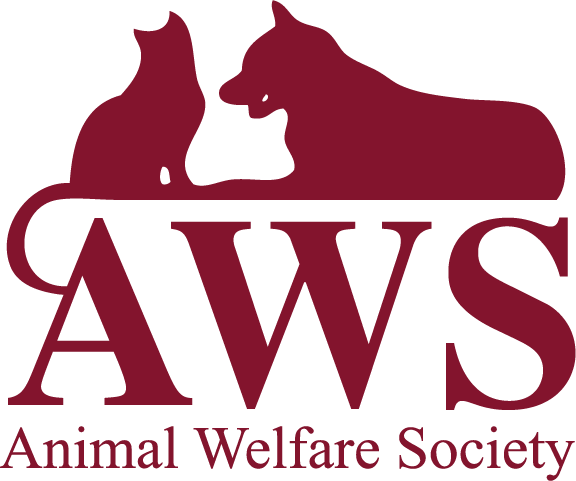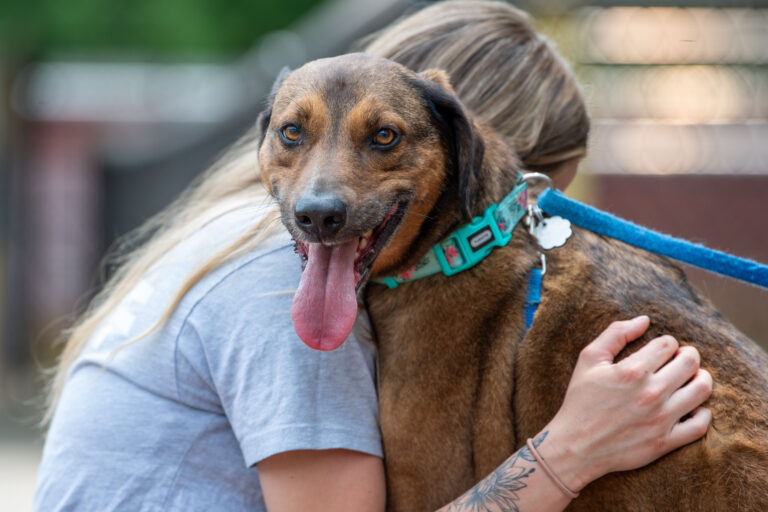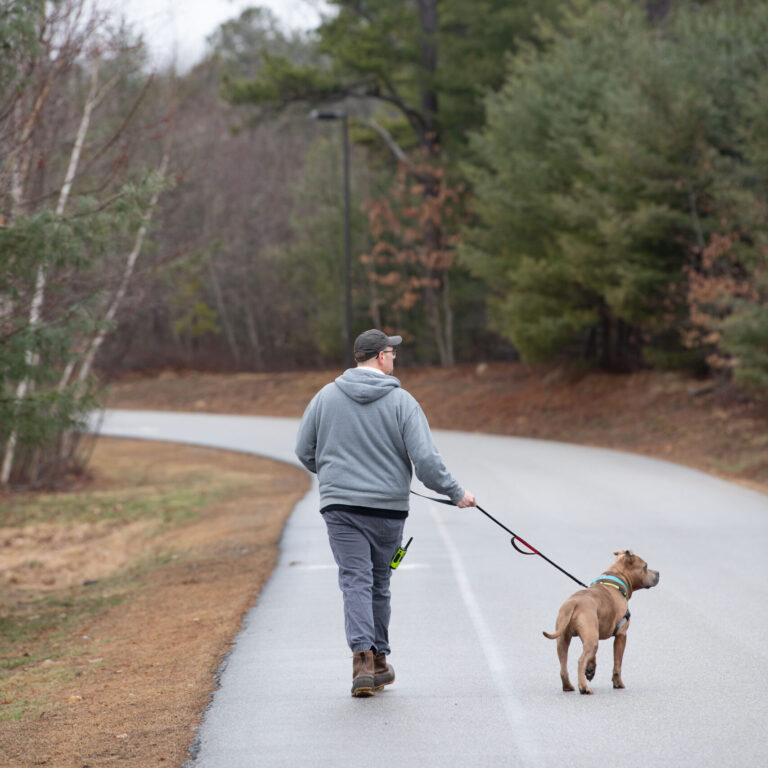Trick Training: No Magic Needed
Learning fun tricks with your pup doesn’t take magic. Like any other training, trick training takes practice, communication and of course, treats. It is a great way to strengthen the bond between you and your dog in fun and exciting ways! It’s also a way to engage your dog both mentally and physically, giving them great, healthy enrichment that’s a good time for both of you. And most of all, it’s fun!
First off, what is Trick Training?
Trick training uses the same positive reinforcement techniques and approaches as any behavior training. But it’s not used to curb a particular behavior or teach a particular behavior, it’s all done for fun! Learning fun tricks with your pup can be so much fun, both while learning and while entertaining your family and friends! Who wouldn’t want to show off all of the cool tricks you’ve learned together!
Trick cues can differ in difficulty and require different skills. Some common tricks that are taught in our classes and others include:
- Shake
- Speak
- Spin
- Paws Up* (see below!)
- High Five
- Jump
In fact, the AKC even offers a Trick Dog title, which includes mastering the above tricks and more.
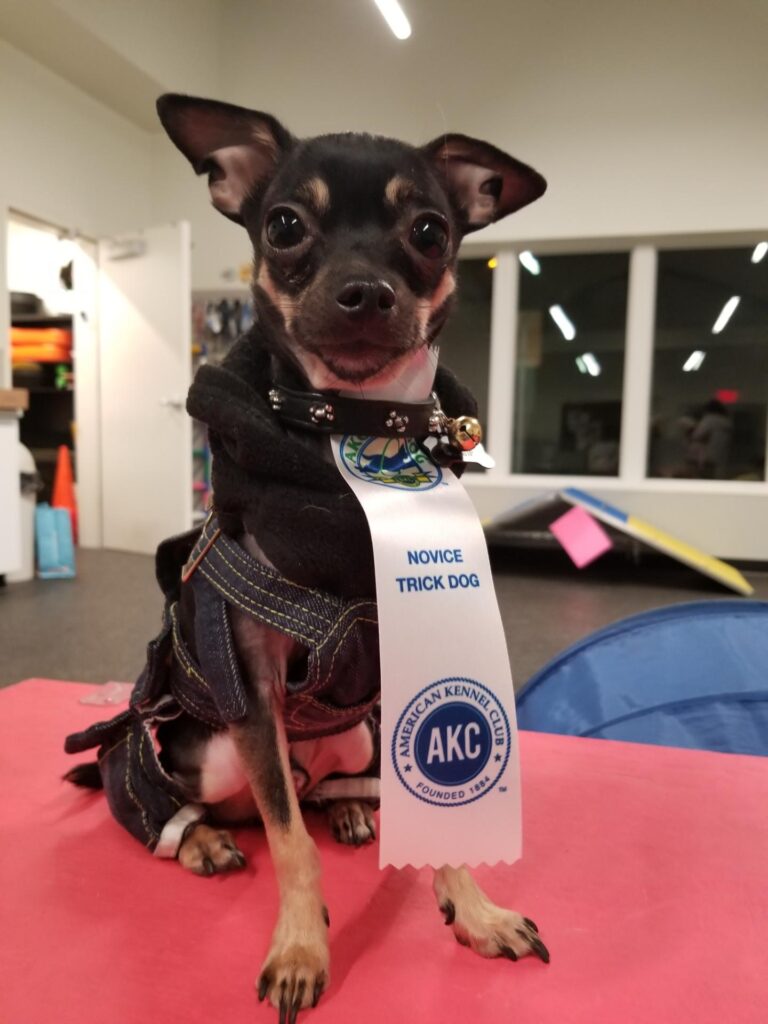
Why Teach Tricks?
Teaching trick cues challenges both of you in new ways while also being a lot of fun! Here are four reasons to consider trick training your dog:
- Mental Stimulation. Engaging your dog’s brain can prevent boredom, reduce destructive behaviors, and promote overall mental well-being.
- Physical Exercise. Many tricks require your dog to move their body in specific ways, promoting flexibility, coordination, and muscle strength. It’s a great addition to your dog’s daily walk or play routine. And it can be especially beneficial on days when a daily walk just isn’t enough (or isn’t possible).
- Confidence Boost. As your dog conquers increasingly complex tasks, they become more self-assured and eager to learn. In fact, this confidence can positively impact your dog’s behavior in a variety of situations, from encounters with other animals to navigating unfamiliar environments.
- Strengthening the Bond. Working as a team with your dog establishes trust and communication, deepening your connection. You and your dog’s overall relationship will improve. This sense of partnership can carry over into other aspects of your relationship, enhancing obedience and cooperation in everyday situations.
A great way to start learning trick cues is by joining a group class, like ones that we offer. If your dog has graduated from a basic manners class, then tricks could be the logical next step! Keep an eye on our Canine Training schedule for upcoming trick training classes and programs.
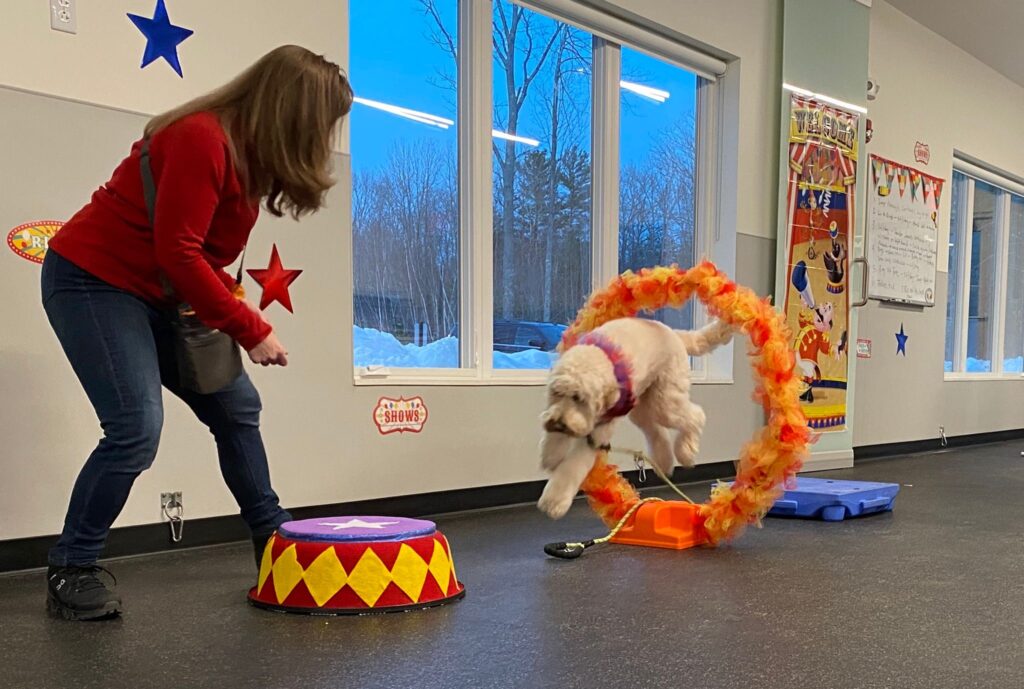
Right now, we are in the midst of our annual Circus Dog classes, which we teach tricks in a fun setting, with a show for participants’ families and friends on graduation day!
Trick Train at Home: Paws Up!
Here’s a fun and easy trick you can try at home. Paws up is when your dog moves towards an elevated surface on cue and places both front paws on it. It’s a useful trick to have in your dog’s repertoire for several reasons:
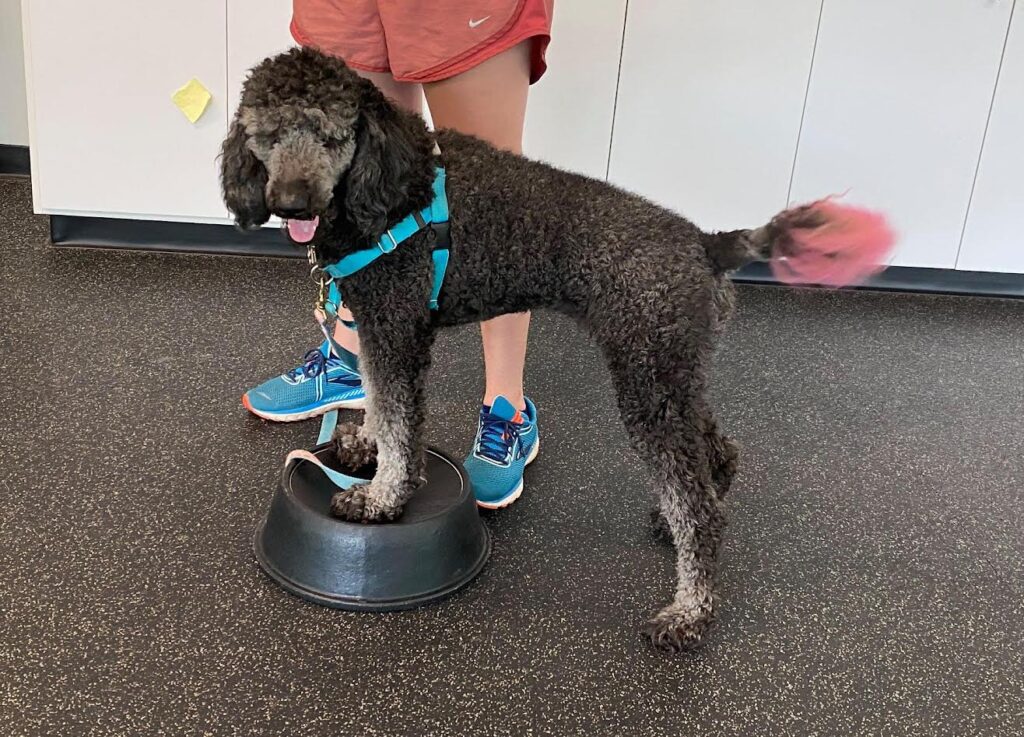
- Helps dogs of all ages with body awareness as well as brain and body coordination.
- Socializes puppies and dogs to novel objects and builds confidence through fun training.
- Adds a new “trick” to your toolbox to use in many scenarios.
What you’ll need!
Let’s get started!
Step 1: Place several treats on top of the platform and let your dog investigate and eat the treats.
Step 2: Once your dog is comfortable approaching and being next to the platform, hold a treat to their nose and slowly move it over the top of the surface. Keep moving the treat slowly in the same direction until your dog stretches their neck to reach for it or they put one or two feet on the platform. Reward with a treat!
Step 3: Keep repeating and rewarding for step 2 until your dog confidently and consistently starts putting both front paws on the platform.
Step 4: Now add the verbal cue “paws up” before luring your dog onto the platform. You can also add duration to this trick by waiting for longer and longer periods of time before rewarding your dog. Start with just a few seconds and build up 5 seconds at a time.
